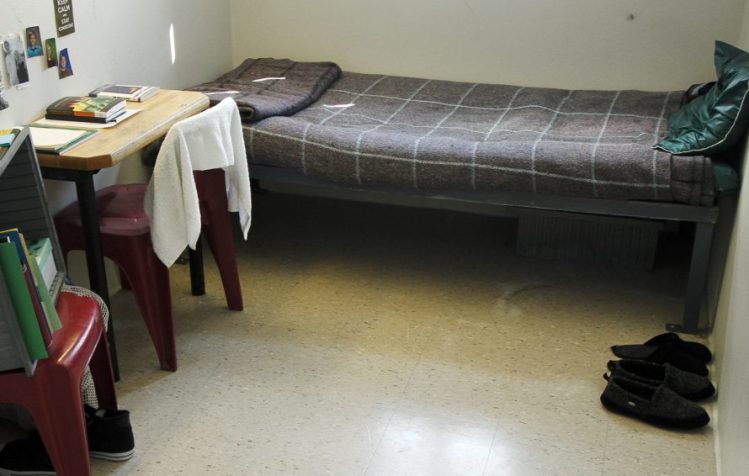In just a few words last week, Chief Justice Leigh Saufley summed up the state of the youth criminal justice system in Maine. Speaking about the case of a Skowhegan teen sent to the Long Creek Youth Development Center for violating probation, Saufley questioned why the system often ends up hurting the kids it’s supposed to help.
“This is a juvenile who is 16 during most of this period of time,” Saufley said as the Maine Supreme Judicial Court heard the teen’s appeal. “He is acting inappropriately, which is not unusual for a juvenile. He is not showing up where he should be, which is not unusual for a juvenile. And the only thing the state could figure out to get this young man back on the ordinary track is incarceration.
“And I want to be clear, Long Creek is not a treatment facility. These kids are in lockdown. It changes who they are, it changes who they think they are. Have we not failed our kids?”
NOWHERE ELSE TO GO
The teen, known only as J.R. in court documents, was put on probabtion for a series of property crimes he committed when he was 15. After failing to abide by the terms of his release, and facing an increasingly frustrated prosecutor and judge, he was sent to the state’s youth prison for up to 18 months, a far longer sentence than if he had committed the same crimes as an adult.
Prison is not the right place for kids like J.R., but there is nowhere else to send them. There is no secure facility short of Long Creek, and the community-based programs experts prefer to institutionalization have withered after years of underfunding, if they ever existed at all.
So kids with mental health challenges and behavioral problems whose parents can’t afford private treatment are left to languish until they earn the attention of the criminal justice system. From there, it’s only a short jump to a locked room at Long Creek, which has proved to be unequipped to handle its inmates, just as youth prisons in general have been shown to only further marginalize troubled kids.
Kids, experts say, respond better to community-based programs, where they can get treatment near home, close to friends and family, and in the same place they’ll have to live once they get better.
Besides being more effective, such programs are also less costly. It costs the state $250,000 a year to house a child at Long Creek; home- and community-based care costs tens of thousands of dollars less.
PROGRAMS WITHERED
Maine at one time built up a system of community-based programs as it moved away from a model that favored institutionalization. But in the years since, the state has failed to increase the Medicaid reimbursement rates that support the system, and it has withered. According to the Bangor Daily News, 42 Maine children are receiving care out of state because of lack of options here, and others are stuck in psychiatric hospitals and emergency departments. There is a waiting list for services hundreds of names long.
In this environment, the LePage administration has suggested cutting rates further, which would only make it more difficult for agencies to provide services. To relieve the pressure on services, and in response to the problems at Long Creek, the administration has also proposed creating a series of regional secure facilities as an alternative. There is disagreement over the merits of this model, but even the organizations that approve of it say they could not operate such a facility at the payment rates being proposed.
We are spending a lot of money for a system that doesn’t even come close to covering the demand. We are doing it in a way that delays care for troubled kids until their problems are impossible to ignore, then sometimes sends them to a place that makes it more likely they won’t get better.
The question isn’t if we have failed these kids, but whether we have the will to really help them.
Send questions/comments to the editors.



Comments are no longer available on this story